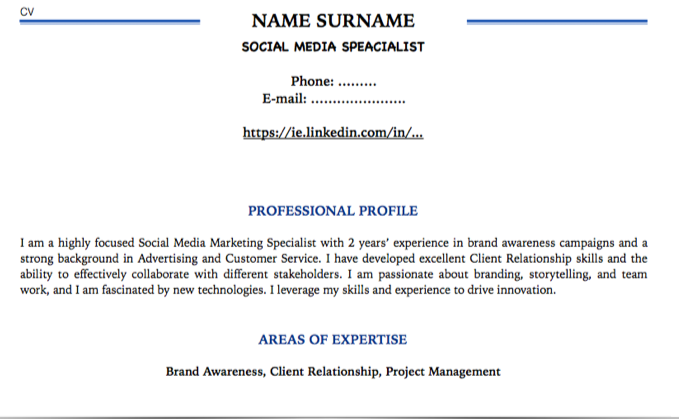Have you ever postponed a job application because your CV wasn’t ready? How do you feel at the thought of spending the next weekend working on your CV? Let’s break through the barriers of writing your CV: let’s break down the process.
Common challenges
The idea of writing or even updating our CV could be daunting, so procrastination happens…and frustration thrives!
Common challenges we encounter in the process of writing or updating our professional documents include: lack of a clear objective – Which role do we need the CV for? – CV structure – What do we need to write? How do we structure the information? – Time – Writing a well structured and clear CV takes time, especially if we want to tailor our document to a specific role description. Lack of a clear process leads to frustration and procrastination…we have all been there at some stage in our career.
Being realistic about the process steers us away from unrealistic expectations.
Have a clear objective
Would you like to have an up to date CV, suitable for any role at any time? Sorry…unfortunately the one-size-fits-all-approach doesn’t work with CVs.
Why?
The objective of the CV is to get us an interview for the specific role we are applying for. Think of your CV as a window on your relevant skills and experience, not as a comprehensive professional biography.
We have 1 or 2 pages to highlight our competencies, skills, experience and qualifications.
Start from the role description: analyse the role description to identify the skills, competencies and experience required by the job, so that you can highlight your relevant competencies and transferable skills accordingly.
Make your CV fit the role description like a glove. How?
Identify the experience, skills and competencies required by the role you want to use the CV for
Analyse the role description and identify the experience, skills and competencies required by the role.
Identify how your own experience, skills and competencies match such requirements and highlight your relevant experience, skills and competencies accordingly: prioritise content.
Tailor your CV to the role description
This step is extremely important: please do not underestimate the difference it could make in the eyes of the readers…and Applicant Tracking System software alike.
A tailored CV is about prioritising content effectively looking for key words that help us position ourselves as suitable candidates, at first glance.
MAKE THE RIGHT FIRST IMPRESSION: focus on your Professional Profile, Areas of Expertise and Highlights & Key Skills sections.
Recruiters and hiring managers take less than a minute to scan through a CV and decide whether or not to proceed further.
The Professional Profile, Areas of Expertise and Highlights & Key Skills sections inserted at the top of your CV are like your business card: they introduce you and summarise what you can do. Make them count.
Spark the interest of recruiters and hiring managers from the very beginning. Make it very easy for them to identify your skills, experience and qualifications: help them help you.
We often tend to overcomplicate a simple process: keep it simple.
• Start from the role description: analyse what the requirements of the role are.
• Work backwards: mirror the requirements of the role description.
An effective CV highlights competencies relevant to the role you are applying for. An effective CV is well structured and easy to navigate through.
Look for STRUCTURE and VISUAL APPEAL.
See sample below – CV top part:

Analyse the role description to identify the requirements of the role. Tailor your CV accordingly: prioritise content and include key words.
BREAK DOWN THE PROCESS INTO 3 STEPS
Make the right first impression and hit the ground running.
1) Identify the role you are interested in: analyse the role description to highlight the requirements of the role. Focus on key skills, competencies, experience and qualifications.
2) Structure your CV: include Professional Profile, Areas of Expertise and Highlights & Key Skills sections.
3) Work backwards: start from the requirements of the role description and tailor your CV accordingly, using the Professional Profile, Areas of Expertise and Highlights & Key Skills sections to highlight how your profile matches the requirements of the role.
PRIORITISE CONTENT


